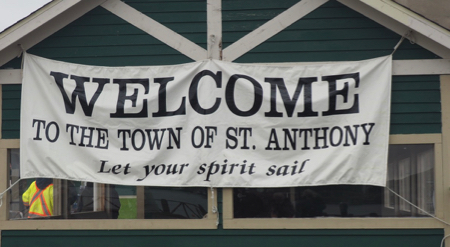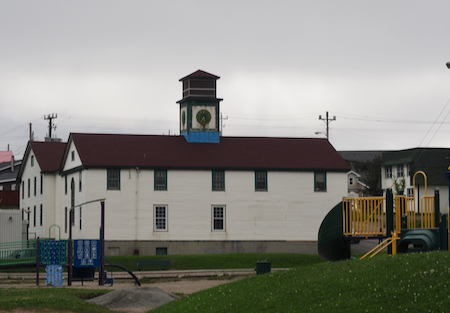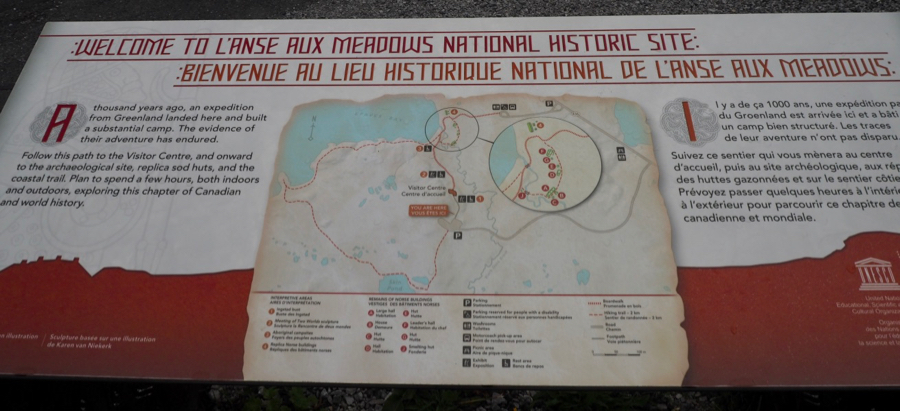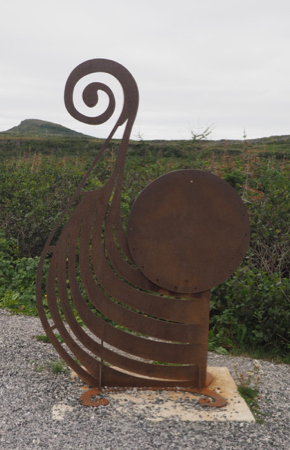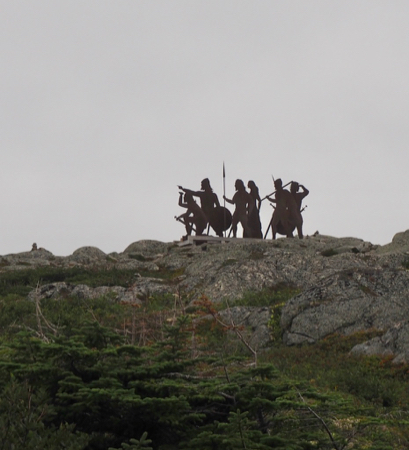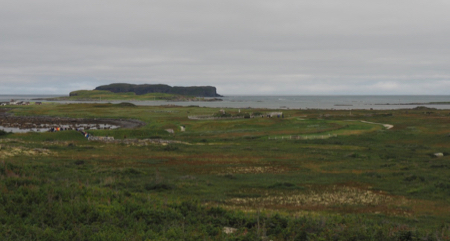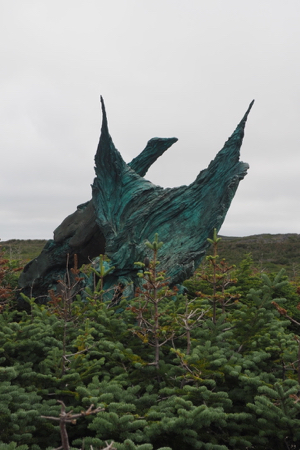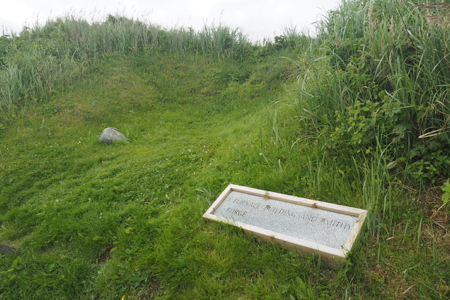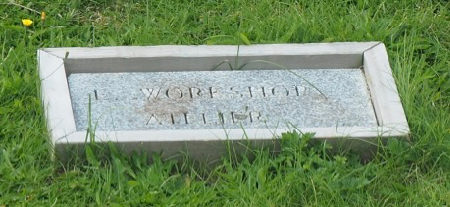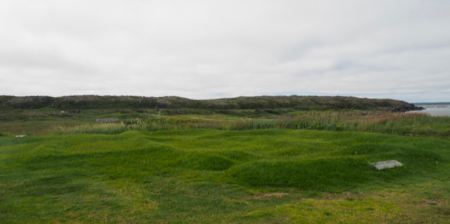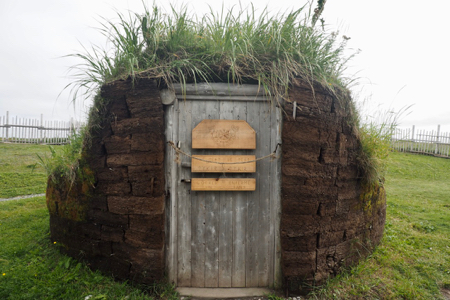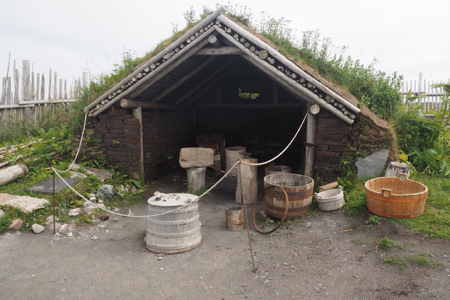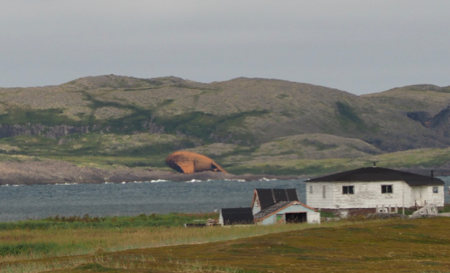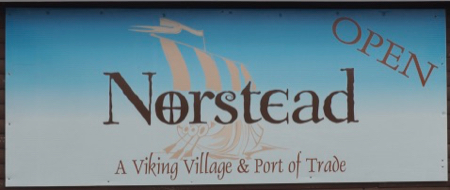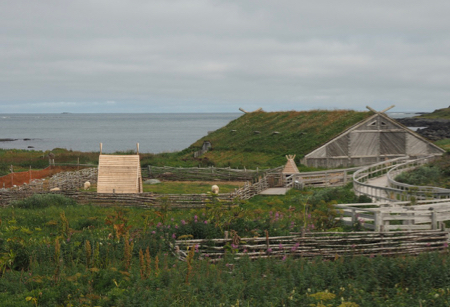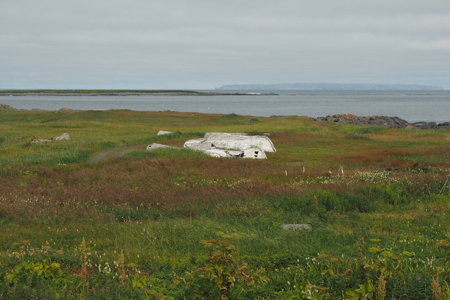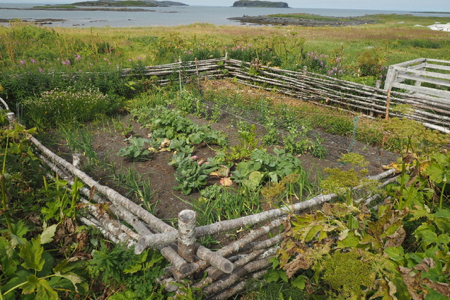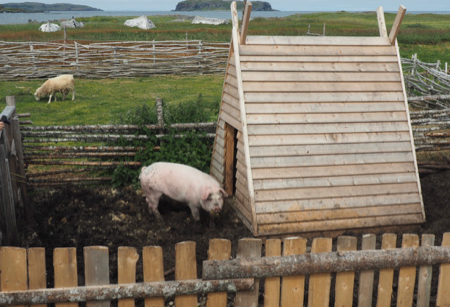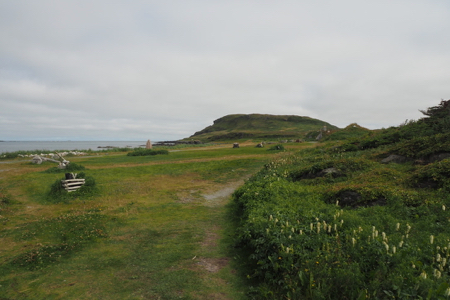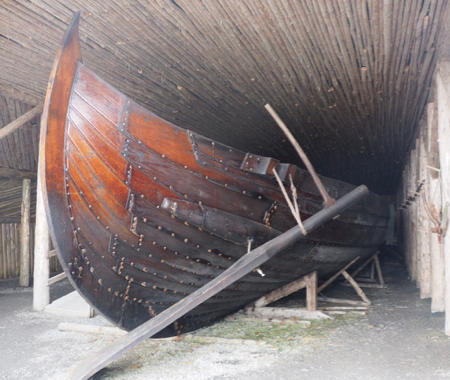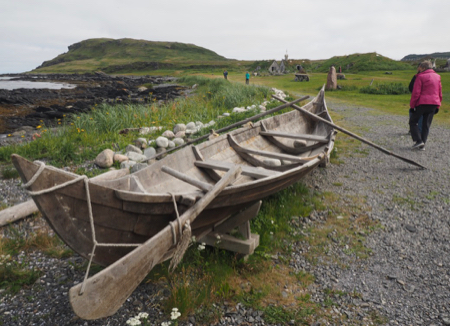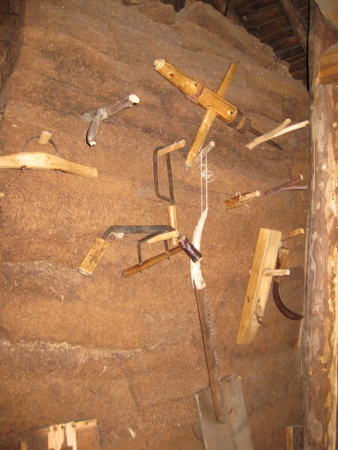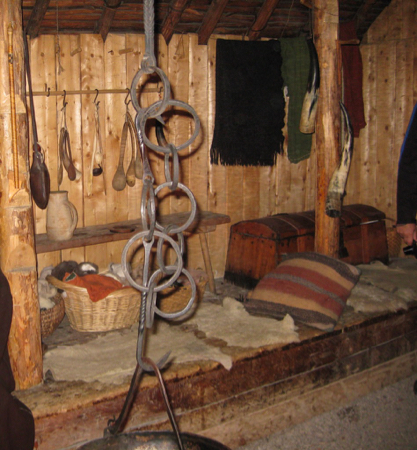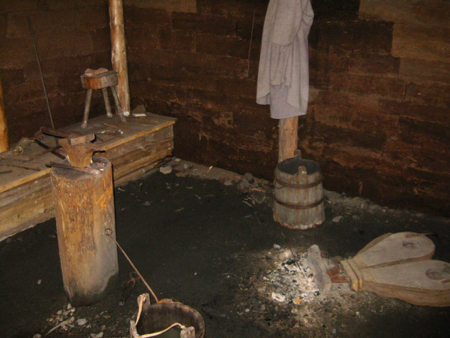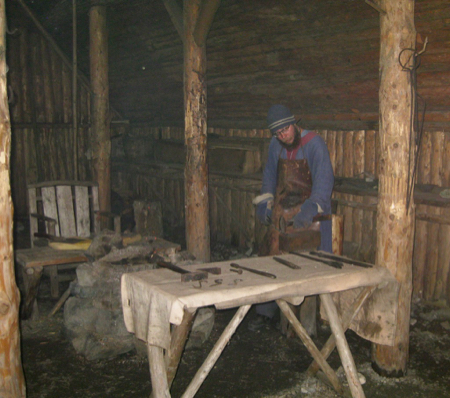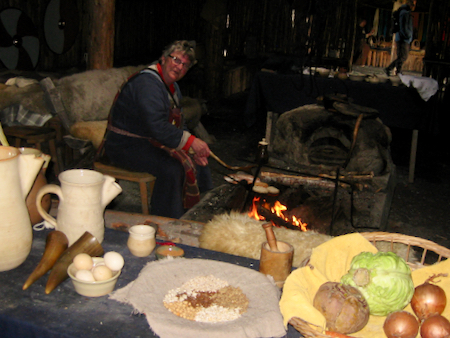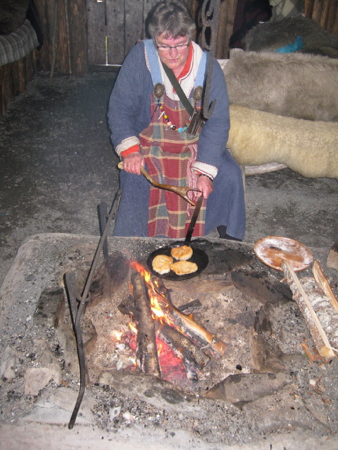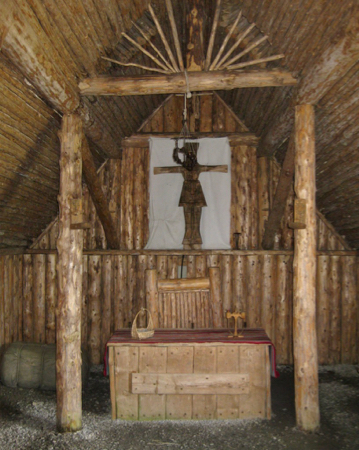Thurs., 8/29 - St. Anthony, Newfoundland
Today we got to do the second important reason we chose to do this cruise: visiting L’Anse aux Meadows, the only confirmed Norse settlement site in North America.
After anchoring, we tendered in to begin our Viking Experience excursion to L’Anse aux Meadows. Transport was by school bus about 25 miles north to L’Anse aux Meadows site. It was a beautiful day, the sun even came out briefly. Our tour guide explained things along the 40-minute drive. Wood is cut for heating homes and a permit allows homeowners to cut and take wood. Sixteen cords are needed to heat a small bungalow. The rock landscape makes digging nearly impossible so telephone poles are based in a rock filled wooden fence-like structure above ground. Most people are fishermen and cod is the main food. It snows a lot and shoveling it is the main activity all winter. They must shovel out when they get up, shovel out after lunch, and shovel out after dinner to keep up with it. Their water source is tinctured with rusted iron and does not look drinkable, but some people use it at least for flushing toilets. The tannin is not removed entirely by filtration.
The Norsemen travelled to North America about 1,000 years ago. Between 60 and 90 people set up an encampment at L’Anse aux Meadows (French for Medea’s Cove) in the 10th century. The group may or may not have been led by Leif Ericsson. The place was used for a decade or two for excursions from Greenland to come to gather hard wood timber and maybe grapes (from Vinland further south, according to the Sagas) and over winter in L’Anse before returning to Greenland. In 1960 a Norwegian explorer and writer, Helge Ingstad, came looking for “Vinland” and a local fisherman brought her to L’Anse aux Meadows where the overgrown ruins of 11th c. Norse buildings were. Excavation at the site found a brass cloak pin, and a weaving spindle that were not left here by any Native North Americans. These were the proof that the Norse were here.
Local clock "tower"
St. Anthony
Parks Canada now runs the preserved L’Anse aux Meadows UNESCO World Heritage Site. This site is important because when the Inuit from this area (having been here for at least 5,000 years) met the Norse Europeans this completed the encircling of the earth as a result of man's migration that originated in Africa and spread “to the ends of the earth.” (“Completion of Human Migration at L’Anse”)
A Parks Canada ranger took us on a tour of L’Anse aux Meadows. She identified and described each of the depressions and mounds that have been excavated. The large hall (long house), servants’ huts, storeroom, weaving work area, workshop, charcoal pit, forge, and smelting hut. Iron ore was found in the peat bogs and the peat was used to build their structures.
Sculpture of the prow of a Viking ship
Vikings arriving
Route of the Vikings from Greenland to North America
Model of the L'Anse aux Meadows site
L'Anse aux Meadows site from the visitor center
L'Anse aux Meadows Visitor Center
Bronze sculpture: Meeting of Two Worlds
Meeting of Two Worlds
Sculpture designates a home site
Site of smithy and forge
Workshop site
Head man's dwelling
We were able to walk into a section of reconstructed buildings
Sod house
Smithy
After the L'Anse aux Meadows tour, our school bus took us to Norstead, a reconstructed “Viking port of trade.”
Entry and livestock corral
Looking to sea
Vegetable garden
Pig sty
View of the Norstead site
Wood and sod buildings
Replica of Viking knarr - ocean-going ship
Fisherman's boat
Decorated stone
Sod church
View of the site from an adjacent hill
Norsted has people dressed in period clothing working a forge or knitting and they helped explain the life of the 10th c.
Loom
Tools
Kitchen
Blacksmith area
Blacksmith area
Cook fire
The cakes were good
Church interior
The landscape looks to us like a lush tundra. Wild flowers grow knee-high but evergreen trees (black spruce and Douglas fir and larch in the boggy areas) are short and wind blown like Krummholz. The moss and lichen were thick and lush. There are some moose in NF but they were introduced, not native. There are caribou, Arctic fox and hare, black bears, and occasional polar bears. People will grow cabbage and root vegetables but the growing season is short.
Getting ready for winter
| Return to Top | Return to Itinerary | Return to Trips page to view other trips | Return to Dreamcatcher Home Page |
